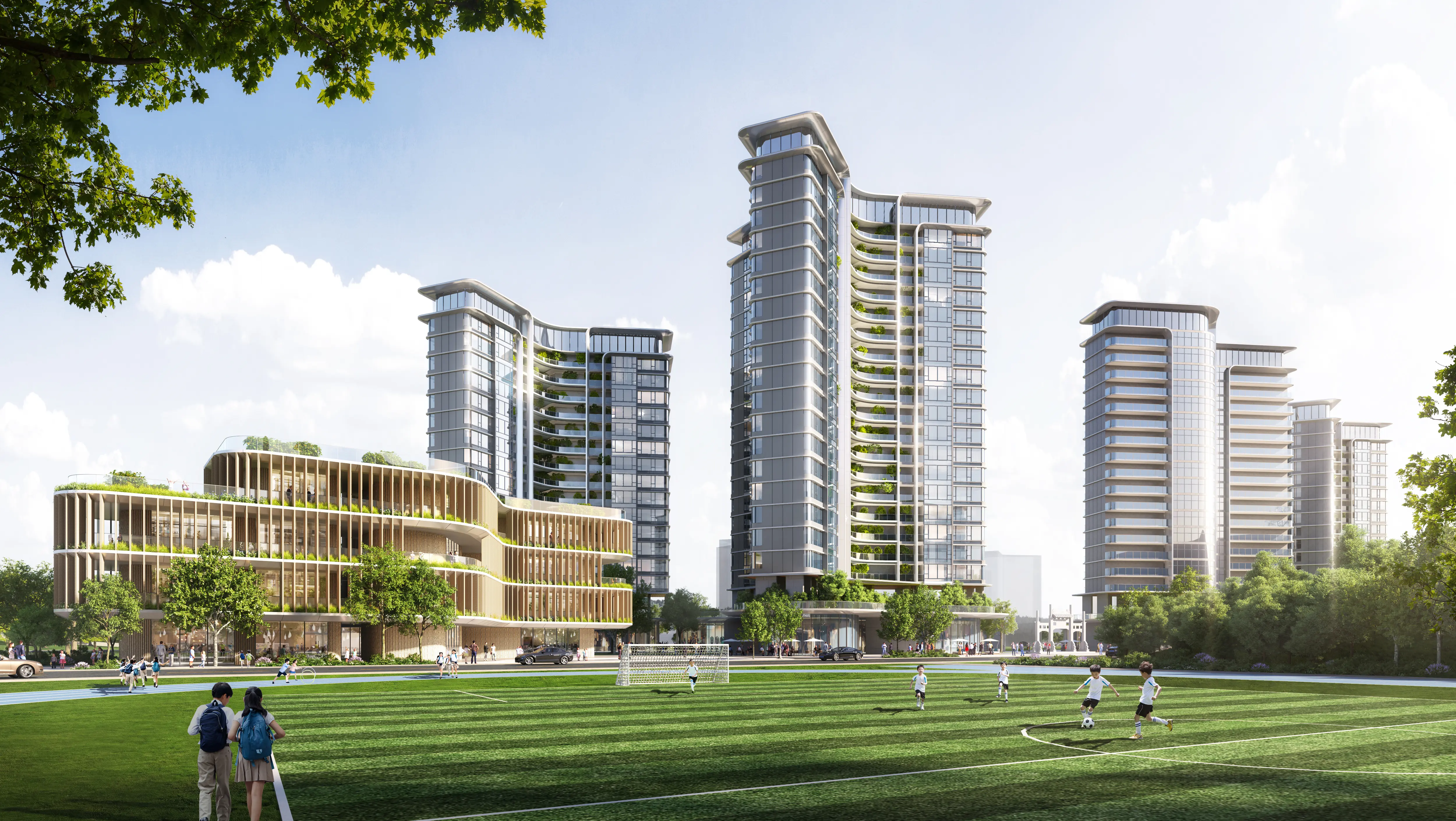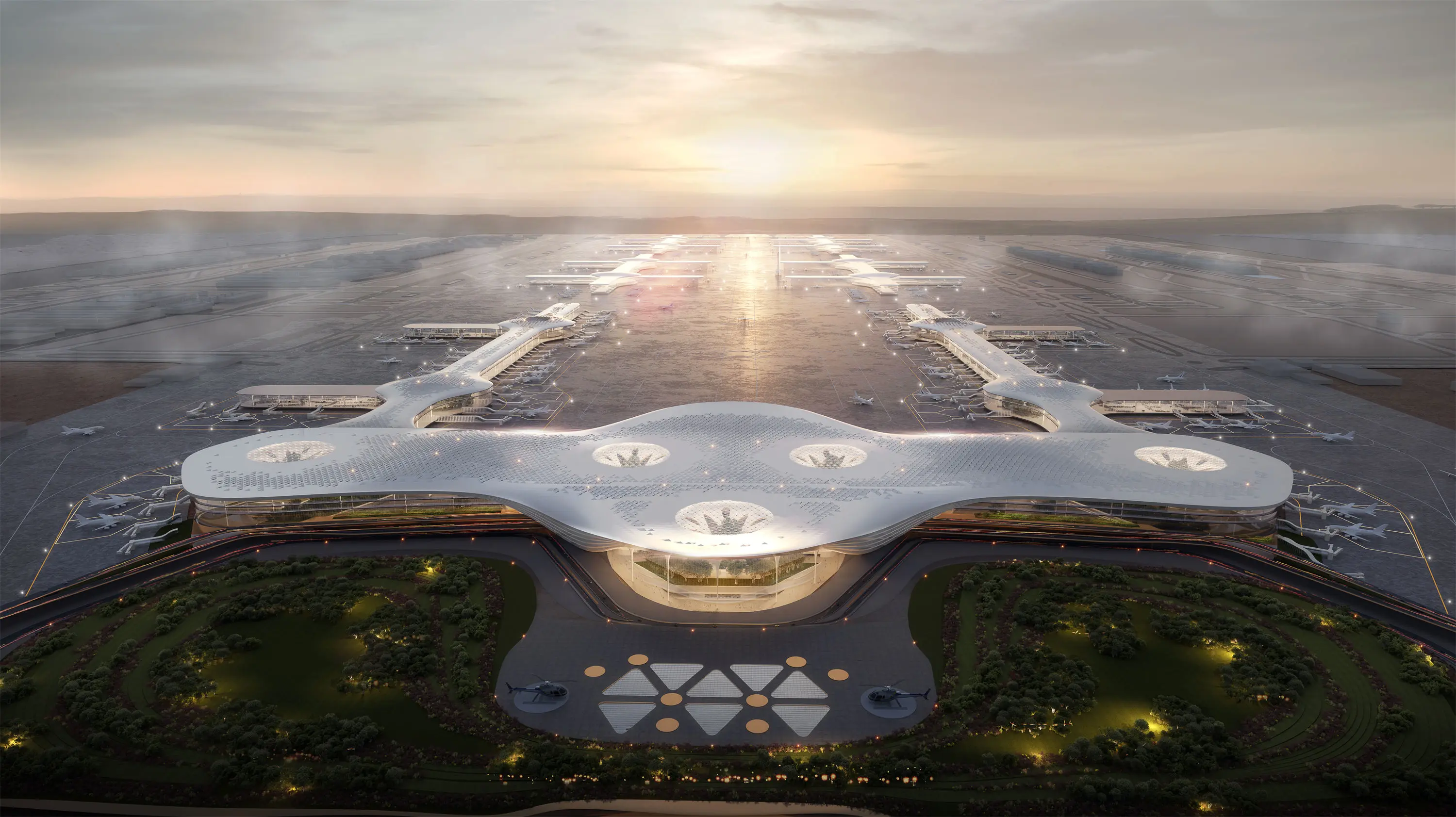What are the future development trends of outdoor architectural rendering?
AI will play a greater role in outdoor architectural rendering. For instance, it can automatically detect material and lighting issues, intelligently optimize rendering parameters, increase the availability of the first version of the image, and also generate a preliminary rendering plan based on the simple description input by the designer, providing inspiration and a basic framework for the designer.
Cloud rendering services will become more mature and widespread. Designers can pay as needed to use the powerful computing resources in the cloud without having to invest a large amount of money in purchasing local hardware equipment. Meanwhile, cloud rendering, in combination with 5G and edge computing technologies, enables GB-level files to be transferred to the cloud in seconds, with a 4K/60FPS picture latency of less than 50ms, significantly enhancing rendering efficiency and work convenience.
Real-time rendering technology is constantly advancing. Designers can immediately observe the changes in the rendering effect during the design process without having to wait for a long time for the rendering to be completed, which speeds up the design decision-making process and improves work efficiency.
Immersive experience enhancement
VR and AR technologies will be deeply integrated with outdoor architectural rendering. Customers and designers can experience the unfinished outdoor architectural environment as if they were there through VR devices, such as strolling around the virtual building and feeling the integration effect of the building with the surrounding environment.AR technology can superimpose virtual architectural rendering images onto real scenes, facilitating intuitive comparison and evaluation of design schemes in actual sites.

Holographic projection expansion: Holographic projection technology, with its realistic three-dimensional visual effect, will become an important means of showcasing outdoor architectural designs. Holographic projection can be used in project exhibitions, urban planning exhibitions and other occasions to present three-dimensional architectural models and the surrounding environment, allowing the audience to have a more intuitive and stunning visual experience.
Sustainability and environmental awareness have been enhanced
The rendering software will have a more powerful energy efficiency simulation function, helping designers accurately predict the energy consumption of buildings under different lighting and climatic conditions during the design stage, thereby optimizing the design plan and improving the sustainability of the building.
Greater emphasis is placed on the genuine display of environmentally friendly building materials, such as new types of solar panels, degradable materials, and green vegetation walls, to promote the application of environmentally friendly materials in architectural design.
Integrate and develop with other fields
Outdoor architectural rendering will be more closely integrated with urban planning. It not only showcases the effect of individual buildings but also presents the relationship between buildings and the surrounding urban environment, traffic flow lines, public facilities, etc., providing a more comprehensive visual reference for urban planning.
The collaboration with landscape design becomes more in-depth. The outdoor architectural scenes rendered will better integrate natural landscape elements such as trees, water bodies, and gardens, creating a more ecological and aesthetically pleasing architectural environment.
LIGHTS IS A 3D RENDERING STUDIO THAT PROVIDES ARCHITECTURAL VISUALISATION AROUND THE GLOBE


